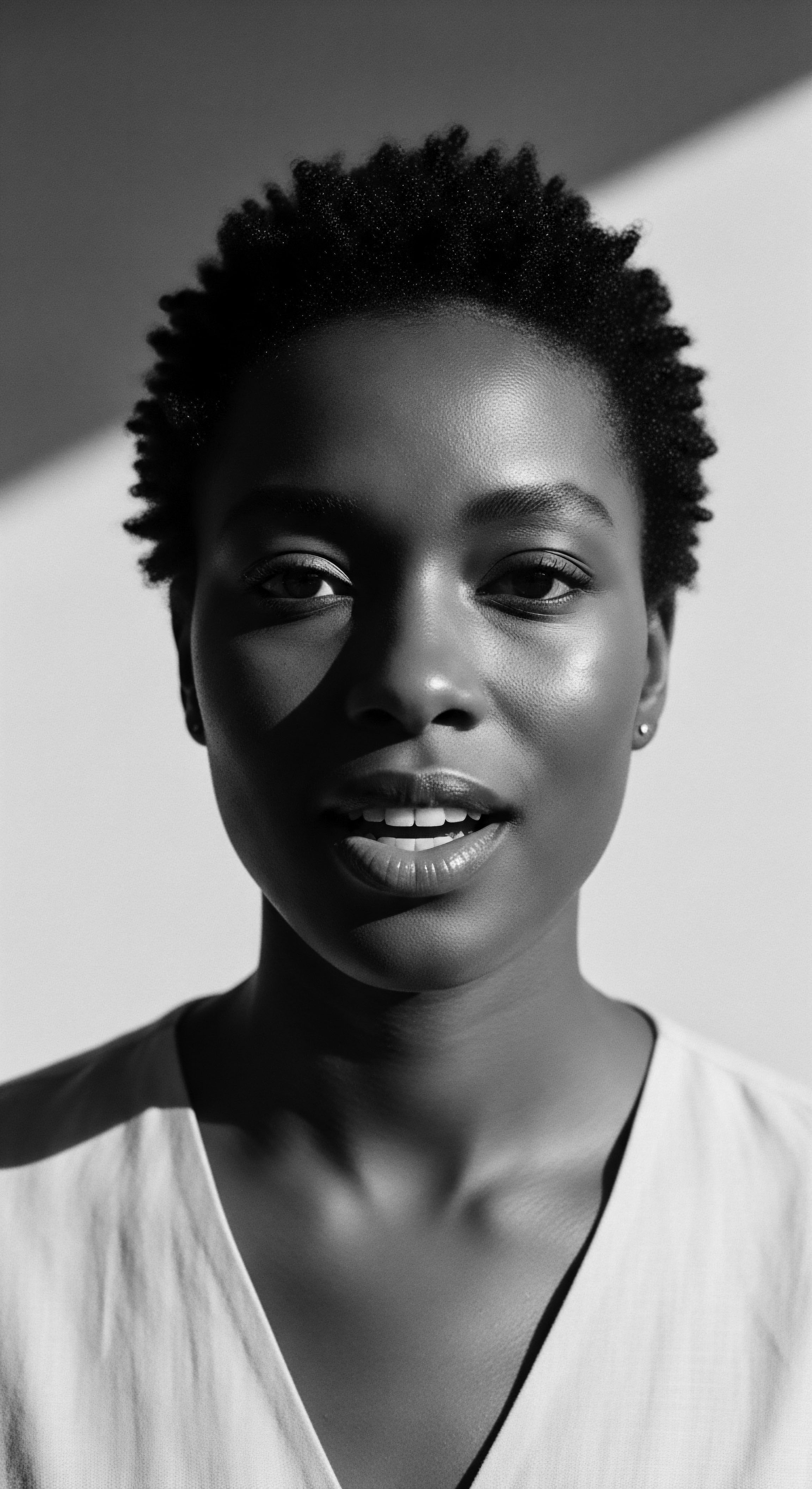
Fundamentals
The concept of a ‘Textured Hair Wash’ reaches far beyond a simple act of cleansing; it embodies a heritage of care, a legacy of knowledge passed through generations, and a scientific understanding deeply rooted in the unique biology of coiled, kinky, and wavy hair strands. Fundamentally, this practice involves the deliberate selection of gentle, nourishing agents and methods that honor the inherent structure and delicate nature of textured hair, ensuring its health and vibrancy. It recognizes that hair with distinct patterns and porosity requires a different approach than straight hair, a truth understood by ancestral communities long before modern scientific inquiry.
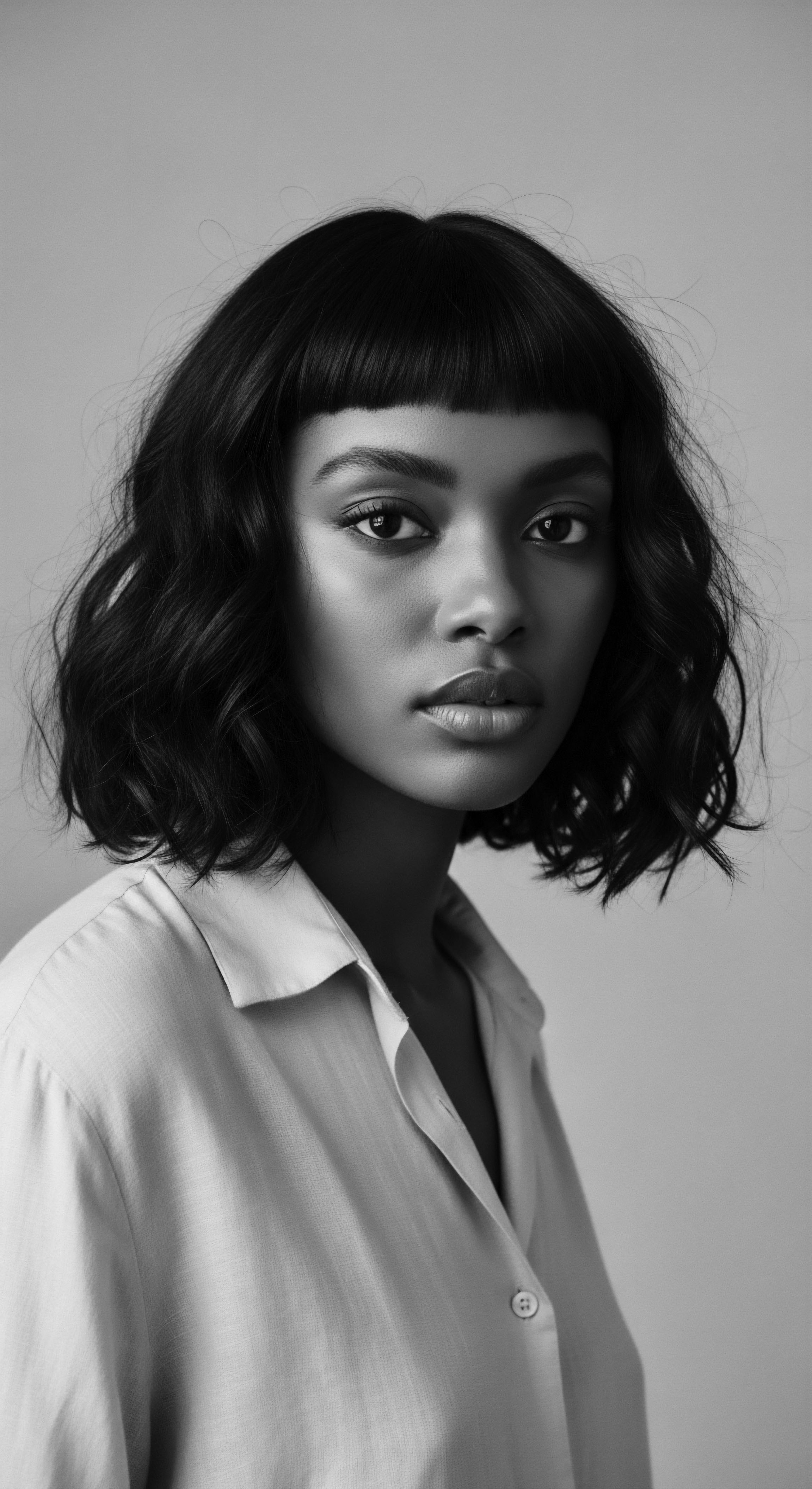
The Gentle Approach
Washing textured hair is, at its core, a gentle conversation with each strand. Unlike hair with a smooth, straight cuticle, textured hair possesses a natural inclination towards dryness and susceptibility to breakage, owing to its structural design. The helical shape of a curl or coil means natural oils from the scalp struggle to travel down the hair shaft, leaving the ends particularly vulnerable. This biological reality necessitated the development of washing practices focused on preservation and hydration.
Our forebears intuitively understood this fragility, creating remedies and rituals that cleansed without stripping the hair of its vital moisture. This understanding, handed down through centuries, continues to inform our modern-day practices, emphasizing products that clean effectively while maintaining the hair’s integrity.
For individuals new to caring for textured hair, the sheer variety of products and techniques can appear daunting. However, at its simplest, a textured hair wash aims to remove build-up—be it environmental debris, styling products, or excess sebum—while minimizing friction and maintaining the hair’s natural moisture balance. It requires a mindful touch, a patience born from centuries of communal grooming practices.

Elemental Ingredients
From the very beginning, ancestral communities drew upon the bounty of the earth for their hair care. The earliest forms of cleansing agents for textured hair were often derived from natural sources, carefully selected for their mild cleansing and conditioning properties. These ingredients, which echoed the surrounding environment, formed the basis of traditional hair wash rituals.
- Saponin-Rich Plants ❉ Various roots and barks, containing natural saponins, offered a gentle lather, cleansing the hair without harshness.
- Clays and Earth Minerals ❉ Used for centuries, different types of clay purified the scalp and hair, drawing out impurities while also imparting beneficial minerals.
- Herbal Infusions ❉ Botanical concoctions steeped in water provided cleansing, soothing, and conditioning benefits, honoring the hair’s unique needs.
These elemental ingredients were not merely functional; they carried symbolic weight, often connecting the individual to the land and the wisdom of plant life. The selection and preparation of these natural washes were often passed down, embodying generations of practical knowledge and a deep reverence for the body’s connection to nature.
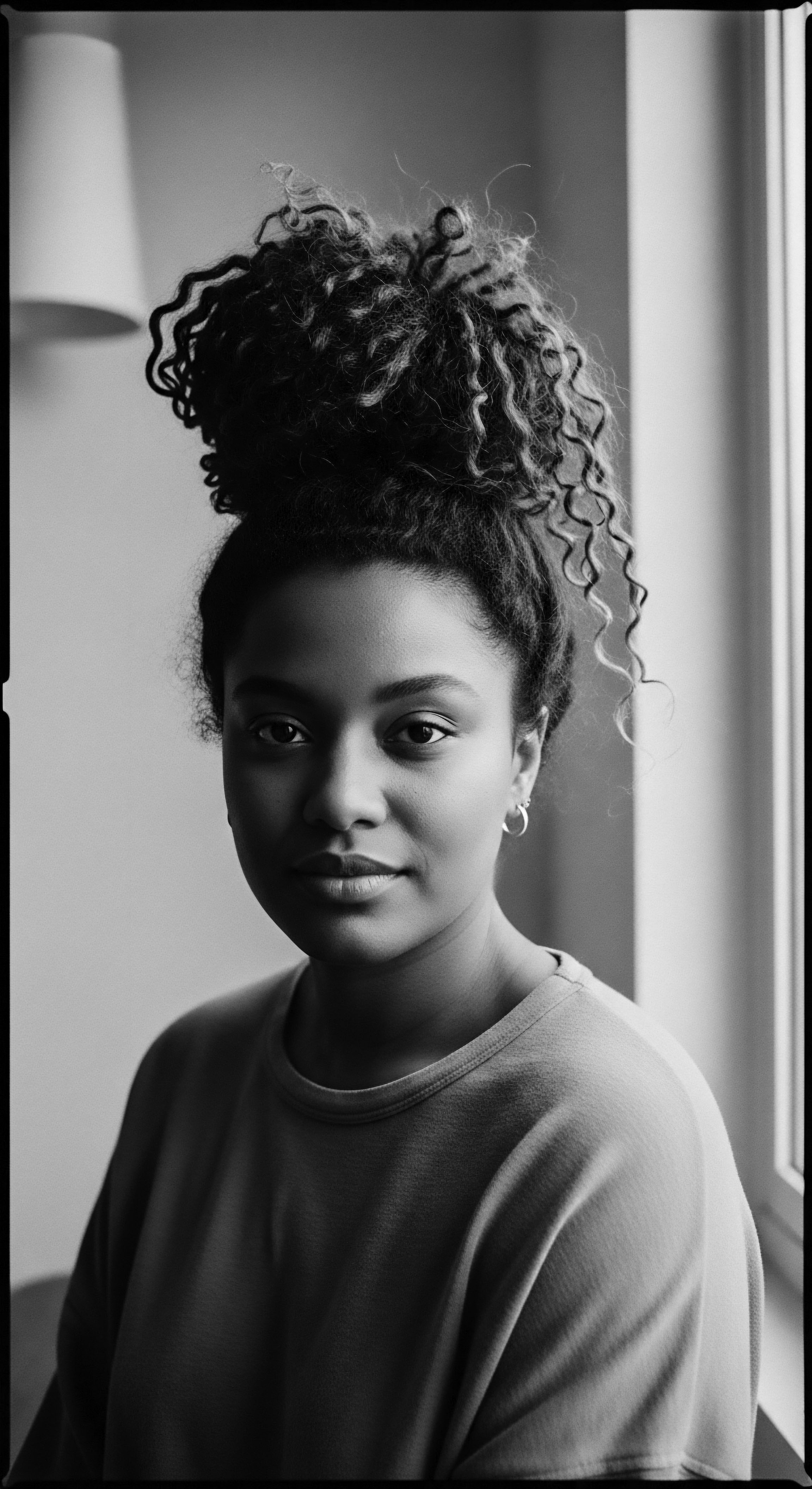
Intermediate
The meaning of ‘Textured Hair Wash’ extends beyond a mere product application; it embodies a sophisticated continuum of care, a dialogue between the hair’s unique architecture and the intentional methods employed for its sustenance. This encompasses the nuanced understanding that traditional shampoos, often designed for straighter hair types, can prove overly aggressive, stripping essential oils and leaving textured strands parched and prone to damage. Recognizing this, the evolution of the Textured Hair Wash represents a movement towards specialized formulations and practices that respect the coil, the curve, and the inherent beauty of diverse hair patterns.
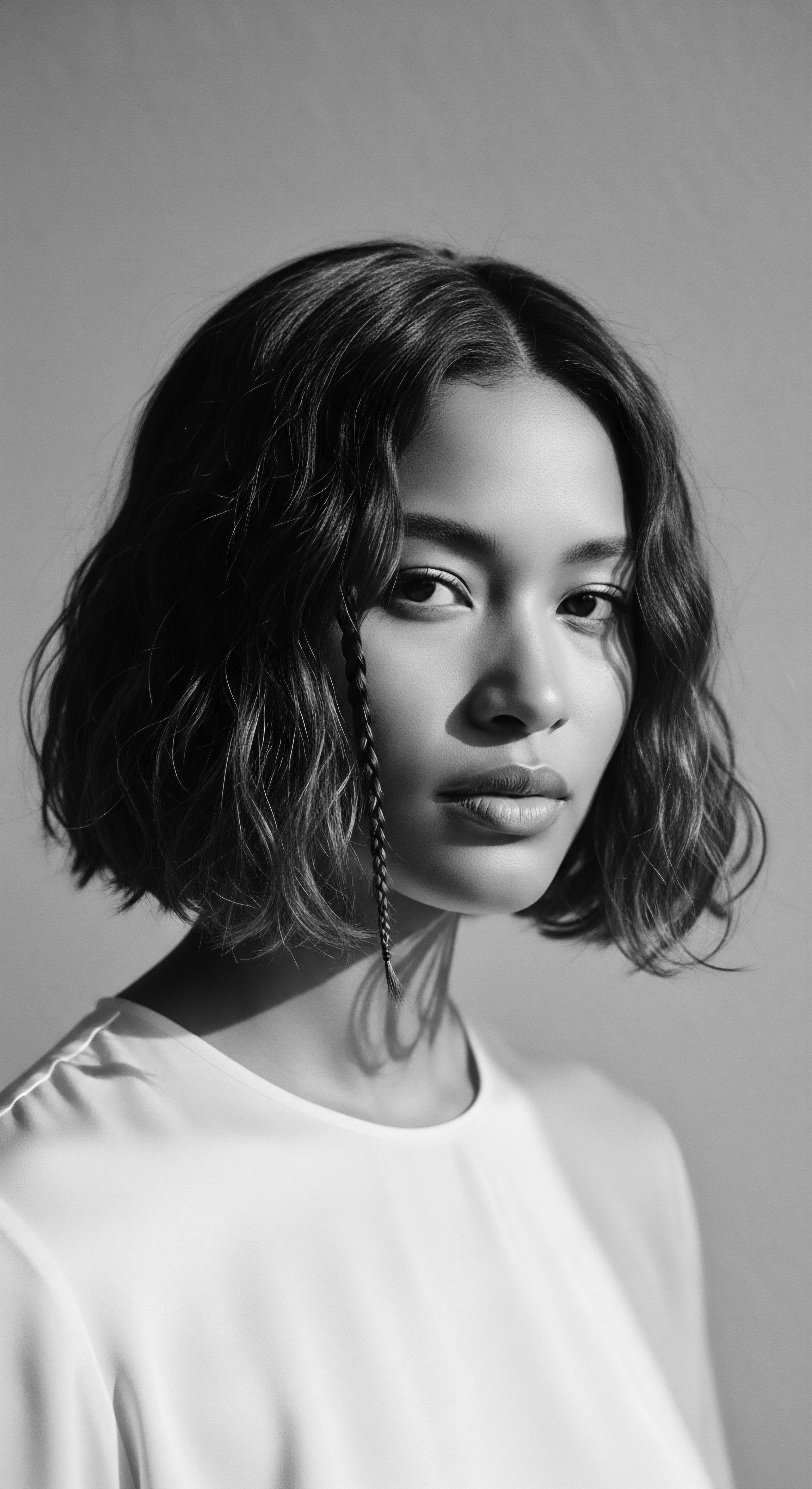
Ingredient Evolution ❉ From Earth to Lab
The journey of cleansing ingredients for textured hair traces a compelling arc, moving from direct earth-sourced applications to meticulously crafted laboratory formulations, yet always retaining a connection to the principles observed in ancestral practices. Early communities instinctively recognized the cleansing power of certain plants, long before the chemical structures of saponins were understood. Yucca root, for instance, used by various Native American tribes, produced a natural lather for cleansing hair without stripping its natural oils.
Similarly, ancient Egyptians employed mixtures of water and animal fats, or clays and ashes mixed with olive oil, as early soaps and cleansers. This ancient wisdom laid the groundwork for contemporary formulations, which now seek to replicate or enhance these benefits through scientific understanding.
The historical trajectory of hair cleansing reveals an unbroken lineage of ingenuity, adapting natural elements into effective care regimens across diverse cultures and eras.
Modern Textured Hair Washes, while employing advanced chemical processes, often draw inspiration from these historical applications. Surfactants, the cleansing agents in contemporary washes, are now carefully chosen to be milder, targeting dirt and product residue without disturbing the hair’s delicate moisture barrier. Humectants, emollients, and botanical extracts are frequently added, reflecting an intention to not only cleanse but also to condition and protect the hair during the washing process. This deliberate selection mirrors the ancestral practice of incorporating nourishing elements into their cleansing rituals.

The Ritual of Cleansing
Washing textured hair transcends simple hygiene; it transforms into a significant ritual, a moment of connection with one’s self and, often, with ancestral traditions. This ritual can be both deeply personal and a shared communal experience, a practice that builds bonds and transmits knowledge.
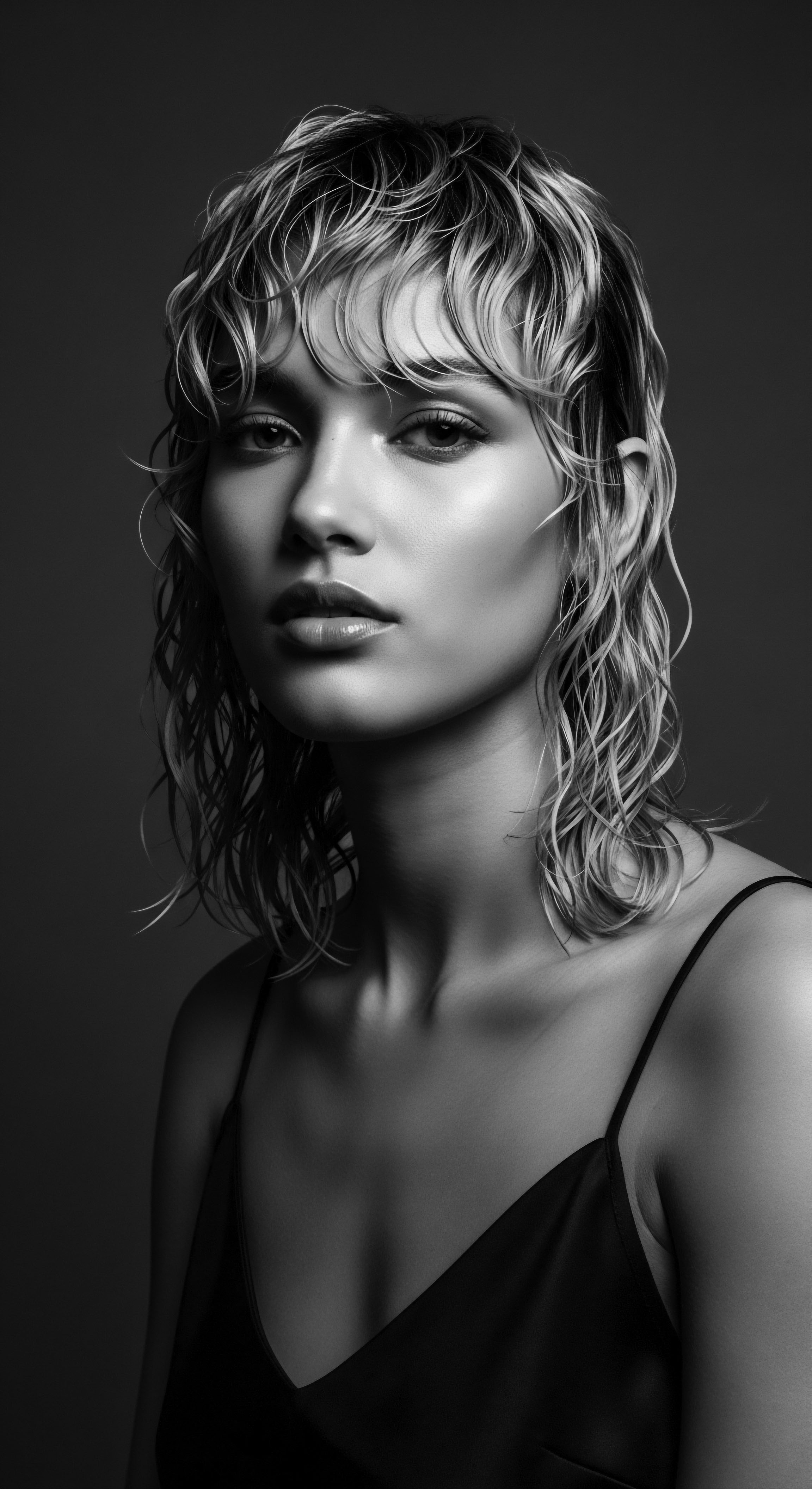
Preparing the Hair
The preparatory steps before a Textured Hair Wash are as vital as the wash itself. They reflect a deep reverence for the hair’s integrity. For instance, pre-shampoo treatments, known as ‘pre-poo,’ involve applying oils or conditioners to the hair before cleansing.
This method, while seemingly modern, echoes historical practices where oils like shea butter or coconut oil were massaged into the scalp and strands as protective barriers against the harshness of environmental elements or rudimentary cleansing agents. It prepares the hair for the washing process by minimizing potential friction and moisture loss, thereby reducing breakage.

Mindful Application
Applying the wash requires intentionality. The approach is often segment-by-segment, gently working the cleansing agent through the hair, rather than piling all the hair atop the head. This mindful technique reduces tangling and minimizes stress on the strands, preserving the curl pattern and preventing breakage.
This careful method contrasts sharply with hurried, aggressive washing, honoring the hair’s tendency to tangle when wet. The fingers, or wide-tooth combs, become instruments of gentle detangling, working in harmony with the water and the wash.

Post-Wash Care
The care following a Textured Hair Wash is a continuation of the ritual, reinforcing the health of the hair. Conditioning, deep treatments, and careful drying methods (such as air-drying or using a microfiber towel to blot, rather than rub) ensure that the hair retains moisture and its natural structure. The use of traditional oils and butters, often warmed and applied with deliberate strokes, deeply seals in moisture and provides a protective layer, echoing historical methods of nourishment. These post-wash routines are not merely about aesthetics; they uphold the vitality of the hair, preparing it for styling and protecting it until the next wash.

Understanding Common Wash Types
The modern Textured Hair Wash landscape offers a variety of formulations, each designed to address specific needs while maintaining the core principle of gentle care for textured strands. These categories, while contemporary in their naming, often find their conceptual roots in ancestral practices of balancing cleansing power with hair preservation.
| Wash Type Co-Wash (Conditioner Wash) |
| Modern Formulation Philosophy Utilizes conditioning agents with minimal surfactants to cleanse without stripping, prioritizing moisture retention. |
| Ancestral Parallel/Connection Similar to ancient traditions of rinsing hair with herbal infusions, milk, or diluted natural acids (like fermented rice water), which provided gentle cleansing and conditioning concurrently. |
| Wash Type Low-Poo (Low-Lather Shampoo) |
| Modern Formulation Philosophy Formulated with mild, sulfate-free surfactants, producing less foam but effectively cleaning, reducing harshness. |
| Ancestral Parallel/Connection Reflects the subtle lather provided by saponin-rich plants (e.g. yucca root) that cleaned without creating excessive, potentially drying, suds. |
| Wash Type Clarifying Wash |
| Modern Formulation Philosophy Contains stronger cleansing agents to remove heavy product buildup, used periodically for a deeper clean. |
| Ancestral Parallel/Connection Correlates with periodic use of specific clays or more potent herbal remedies for a profound purification, often before significant cultural events or after prolonged protective styling. |
| Wash Type These varied approaches, whether modern or ancestral, reflect a continuous commitment to tailoring hair care to the unique characteristics of textured hair, recognizing its need for both cleansing and profound nourishment. |
Each type of wash, whether a contemporary formulation or an ancient remedy, aligns with the overarching objective of maintaining health and vitality in textured hair. They represent a testament to human ingenuity and a continuous understanding of how to best care for these unique hair types, always with a deep respect for their inherent structure.
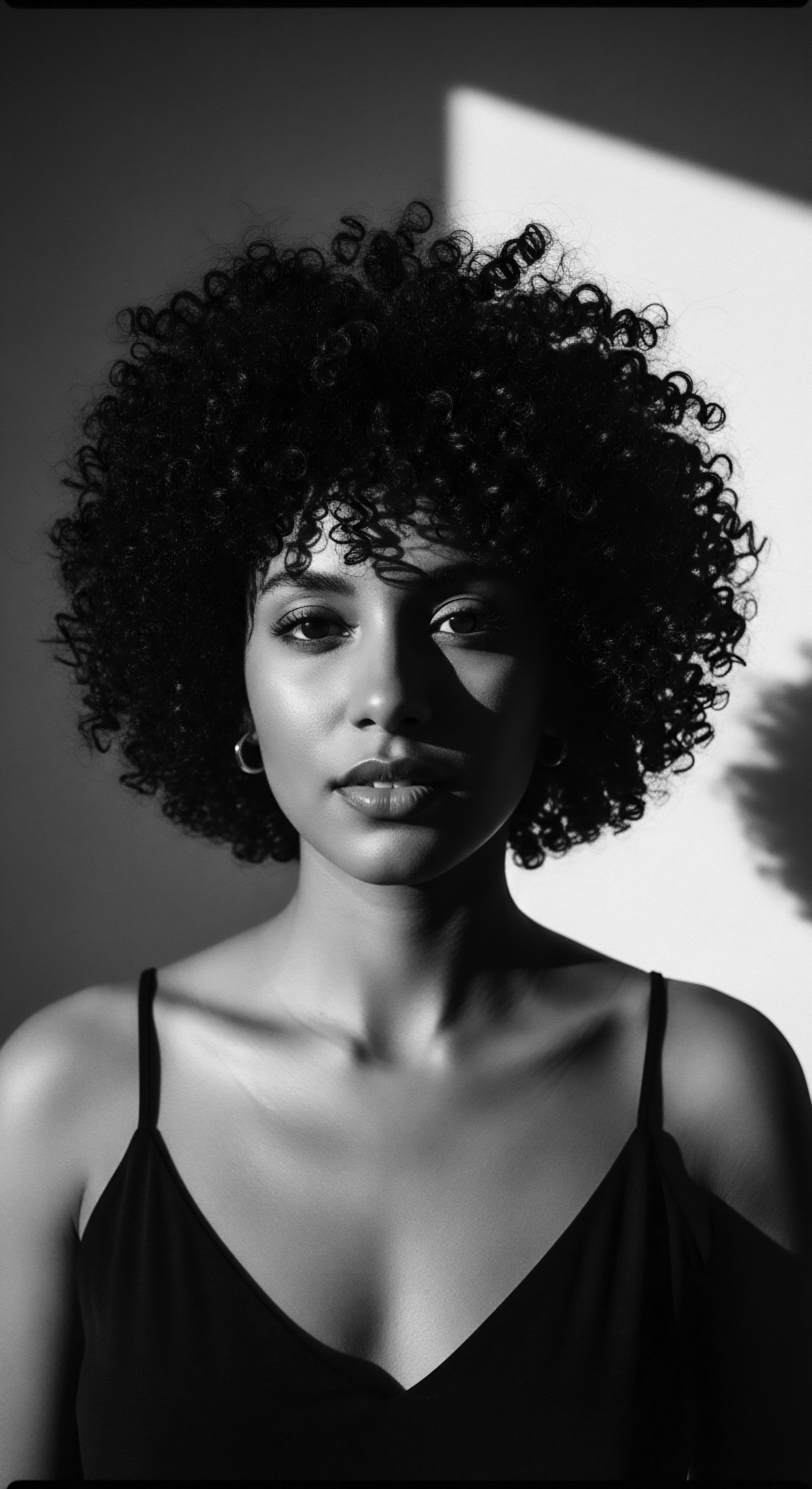
Academic
The scholarly consideration of ‘Textured Hair Wash’ transcends its utilitarian meaning, unfolding as a complex domain of inquiry that marries hair science, cultural anthropology, and historical sociology. It is defined not merely as a cleansing agent, but as an indispensable component within a holistic system of care meticulously engineered to address the specific biomechanical and physicochemical attributes of hair characterized by significant coiling, kinking, or waving. This definition encompasses the purposeful selection of formulations that mitigate friction and desiccation, factors intrinsically linked to the morphological characteristics of these hair types.
The helical or elliptical cross-section of textured hair strands renders them more prone to cuticle lifting and fracture, demanding a washing paradigm that prioritizes lipid layer preservation and protein integrity. Furthermore, the very meaning of this cleansing act is profoundly interlocked with the historical experiences, collective identities, and ancestral wisdom of Black and mixed-race communities across the globe.

The Biomechanical and Chemical Specificities of Cleansing Textured Hair
Hair with intricate curl patterns inherently presents a challenge to the even distribution of natural sebum from the scalp along the hair shaft. This leads to a predisposition for dryness at the ends, while the scalp itself can accumulate product residue and environmental pollutants. The cleansing process must therefore be acutely calibrated. From a scientific perspective, effective Textured Hair Wash formulations employ amphiphilic molecules (surfactants) engineered to emulsify lipophilic soil (oils, product residue) and hydrophilic soil (dust, sweat), allowing for their removal with water.
However, the critical distinction lies in the choice of surfactants. Harsh anionic surfactants, historically prevalent in conventional shampoos, can excessively strip the hair’s lipid layers, disrupt the tightly bound cuticle, and contribute to hygral fatigue, particularly problematic for highly porous textured hair.
A truly appropriate Textured Hair Wash, therefore, often features non-ionic, amphoteric, or mild anionic surfactants. These gentler alternatives clean without undue disruption to the hair’s intercellular cement or protein matrix. They preserve the cuticle’s flattened architecture, which is vital for maintaining moisture and minimizing tangling. The inclusion of conditioning polymers, humectants (such as glycerin or hyaluronic acid), and occlusives (like natural oils or silicones) within the wash formula itself is a strategic scientific intervention.
These additions provide lubricity, reduce inter-fiber friction during the wash, and initiate moisture retention, directly countering the natural propensity of textured hair to dehydrate and knot. The meticulous formulation of such products represents a contemporary scientific validation of ancestral wisdom that always prioritized moisture and detangling within their cleansing rituals.

Cleansing, Community, and Identity ❉ A Historical Examination
The act of washing textured hair has consistently served as a potent cultural marker, embodying layers of social meaning that extend beyond mere hygiene. In many pre-colonial African societies, hair care, including cleansing, was a communal activity, deeply embedded within the social fabric and carrying significant spiritual and identity-based connotations. Hairstyles themselves served as complex visual languages, conveying status, age, marital standing, and even tribal affiliation. The preparation and application of cleansing agents were often shared experiences, fostering intergenerational bonds and transmitting specialized knowledge (Byrd & Tharps, 2001).
For diverse textured hair communities, the communal nature of hair washing transcends the physical act, serving as a powerful conduit for cultural preservation, identity affirmation, and the enduring transmission of ancestral wisdom.
Consider the profound historical example of hair cleansing and maintenance within enslaved African communities in the Americas. Stripped of their ancestral lands, tools, and communal structures, the act of hair care, including washing, became a desperate yet resilient act of cultural retention and resistance. Enslavers frequently shaved the heads of captured Africans upon their arrival, a deliberate and dehumanizing act intended to erase identity and sever connections to ancestral practices. Yet, against this backdrop of extreme oppression, ingenuity persisted.
Enslaved individuals, lacking traditional ingredients and implements, resorted to utilizing whatever was available to cleanse and tend to their hair, from simple water and ash mixtures to less conventional substances like clay or even rudimentary forms of soap made from animal fats. While often rudimentary and far from ideal, these practices represented an unwavering commitment to self-preservation and a refusal to allow the complete erasure of their heritage.
The ethnographic research by Sybille Rosado (2003) speaks to this enduring legacy, noting that among women of African descent, “hair and hairstyles are evidence of a set of rituals that are being practiced throughout the diaspora.” Her work highlights how the similarity in grooming practices across the diaspora reveals a profound, continuous connection to sub-Saharan Africa, a “grammar of hair” that persisted despite the rupture of the transatlantic slave trade. The very act of washing and caring for textured hair, even with improvised materials, became a quiet defiance, a reaffirmation of personhood and a link to a stolen past. This resilience speaks volumes about the intrinsic value placed upon hair and its care as a repository of cultural memory.

The Ancestral Science of Saponins and Cleansing Plants
Long before the molecular structures of surfactants were isolated in laboratories, ancestral communities intuitively harnessed the cleansing properties of saponin-rich botanicals. Saponins are natural compounds, primarily found in plants, that create a stable foam when agitated in water, acting as natural detergents. Numerous plants indigenous to various African regions and other parts of the world where textured hair is prevalent were utilized for their cleansing efficacy.
For example, the Soapberry (Sapindus mukorossi or Sapindus saponaria) was widely employed across parts of Asia and Africa. Its dried fruit contains significant levels of saponins, making it a natural, biodegradable cleansing agent. Similarly, the Yucca Root, used by Native American tribes, was crushed and agitated in water to produce a cleansing lather. These traditional practices demonstrate an empirical understanding of phytochemistry, applying plant knowledge to address specific hair care needs.
The effectiveness of these natural cleansing agents lies in their ability to gently lift dirt and oils without excessively stripping the hair’s natural protective layers. The wisdom embedded in these ancestral applications serves as a blueprint for contemporary formulators seeking mild, effective, and often plant-derived cleansing solutions for textured hair.

The Psychological and Communal Dimensions of Hair Washing Across the Diaspora
Beyond the purely physical act, the Textured Hair Wash holds significant psychological and communal weight within diasporic communities. For centuries, hair has been a canvas for identity, a visible marker of cultural belonging, and a site of both oppression and resistance. During periods of enslavement and colonialism, the forced shaving of heads or the imposition of Eurocentric hair standards aimed to strip individuals of their cultural identity and self-worth. In response, the meticulous care of textured hair, including the washing process, became an act of reclaiming autonomy and celebrating heritage.
Communal hair washing, a practice noted in pre-colonial Ghana where feminine hair care was a shared responsibility among family and friends, served as a crucial social activity that strengthened familial bonds. This shared experience provided a space for storytelling, the transmission of cultural norms, and emotional support. The very act of hands moving through another’s hair, cleansing and detangling, fostered intimacy and solidarity. Even today, among many Black families and communities, the ritual of washing a child’s or a loved one’s hair continues to be a moment of tenderness, connection, and the quiet passing down of traditions.
It is a time when stories are exchanged, lessons imparted, and the enduring resilience of textured hair, and the people who wear it, is celebrated. The meaning of a Textured Hair Wash, therefore, extends into the psychological realm of self-esteem and collective pride, actively countering historical narratives of derogation.
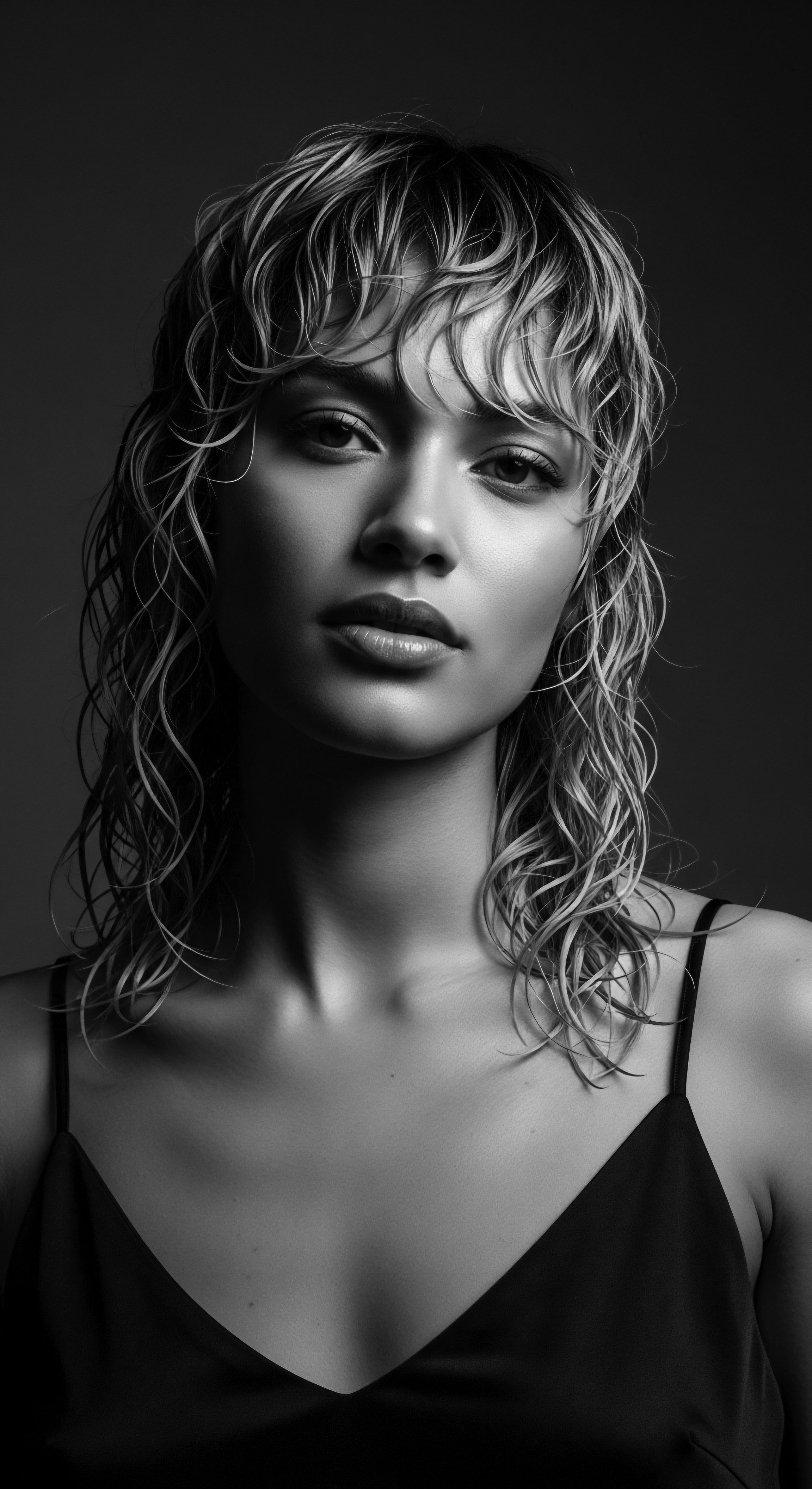
Reflection on the Heritage of Textured Hair Wash
The journey of Textured Hair Wash, from ancient botanical concoctions to modern scientific formulations, reflects an enduring legacy woven into the very fabric of textured hair communities. It is a testament to the profound ingenuity and resilience of those who, for millennia, have understood the unique requirements of coils, kinks, and waves. This practice, often overlooked in broader narratives of hygiene, stands as a vibrant archive of ancestral wisdom, a living testament to the deep respect held for hair as a spiritual extension of the self, a visual diary of identity, and a profound cultural marker.
Our historical exploration reveals that the desire to cleanse and care for textured hair is not a contemporary invention; rather, it is a timeless pursuit, continually shaped by the ebb and flow of human experience. From the careful selection of saponin-rich roots in pre-colonial Africa to the resourceful use of unconventional ingredients during periods of forced displacement, the essence of Textured Hair Wash has consistently revolved around preserving the hair’s natural beauty and vitality. It encapsulates a collective memory of touch, scent, and shared moments, passing down through generations not just techniques, but also the very soul of care.
The scientific understanding we possess today, validating the gentle, moisture-retaining approaches long favored by our ancestors, bridges the perceived divide between traditional wisdom and modern knowledge. This confluence allows us to appreciate the sophistication inherent in historical practices and to continue evolving hair care in a way that honors its rich heritage. The Textured Hair Wash, then, is more than a routine; it is a profound connection to lineage, a daily affirmation of identity, and a celebration of the unbound helix, freely expressing its story. It invites us to pause, to connect with the wisdom of the past, and to carry forward a tradition of conscious care that nourishes not only the hair, but the spirit as well.

References
- Byrd, Ayana, and Lori Tharps. 2001. Hair Story ❉ Untangling the Roots of Black Hair in America. St. Martin’s Press.
- Rosado, Sybil Dione. 2003. Braided Archives ❉ Black hair as a site of diasporic transindividuation. York University.
- Rosado, Sybil Dione. 2007. Nappy Hair in the Diaspora ❉ Exploring the Cultural Politics of Hair Among Women of African Descent. University of Florida.
- Thompson, Cheryl. 2009. Black Women, Beauty, and Hair as a Matter of Being. Women’s Studies.
- Gates, R. 1957. Forms of hair in South African races. Man.
- Grenee, H. 2011. What spending a half a trillion dollars on hair care and weaves say about us. The San Diego Voice and View Point.
- Jacobs-Huey, Lanita. 2006. From the Kitchen to the Salon ❉ Language and Cultural Co-Construction in an African American Community. Oxford University Press.
- Rooks, Noliwe M. 1996. Hair Raising ❉ Beauty, Culture, and African American Women. Rutgers University Press.
- White, Shane, and Graham White. 1995. Slave Hair and African American Culture in the Eighteenth and Nineteenth Centuries. The Journal of Southern History.
- Okeke, Stella. 2023. What Every Dermatologist Must Know About the History of Black Hair. Journal of Drugs in Dermatology.
